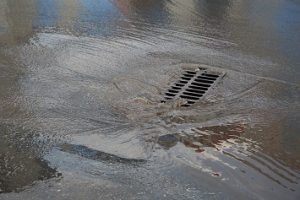Well, you’re just getting used to new obligations under U.S. Environmental Protection Agency’s (EPA) 2015 Multi-Sector General Permit (MSGP) for stormwater discharges associated with industrial facilities. Do you really have to start thinking about the next iteration of the MSGP? The answer is yes—and not just for those currently subject to the federal industrial MSGP and its state counterparts.

Note. The current Multi-Sector General Permit (MSGP) for industrial stormwater covers over 4,000 facilities nationwide and is used as a framework for dozens of similar state programs.
The next industrial stormwater MSGP is due in 2020. Even if the current EPA officials manage to put in place its deregulation agenda, this 2020 permit is subject to a settlement that could significantly increase the industrial stormwater permitting reach and associated costs. Here’s what’s going on and what you can do.
A number of environmental groups headed up by the Waterkeeper Alliance were patently unhappy with the 2015 MSGP. So, they filed a suit and reached a settlement agreement with the EPA in August 2016, which ties the hands of the current EPA, no matter its industry friendly stance. Let’s take a look at some components of the settlement and how they may affect industrial stormwater requirements.
Report By the NRC
Under the terms of the Waterkeeper settlement, the EPA will issue a draft “Next” MSGP by September 1, 2019. The draft MSGP will take into account the results of a mandated study by the National Research Council (NRC). The study will consider the following issues:
- Benchmark monitoring
- Numeric retention standards
- Highest priority facilities
In addition to the results of the NRC study, the EPA will also consider including certain additional measures, including banning the use of coal tar sealants as a requirement for coverage, in its draft MSGP.
The NRC study is being conducted by a committee of the National Academies of Sciences, Engineering, and Medicine, which held its first meeting on November 20, 2017.
Benchmark Monitoring
Stormwater benchmark monitoring is used to determine the overall effectiveness of your facility’s stormwater control measures. You were required to monitor for benchmarks quarterly during the first year of the permit. If the average of the four monitoring values did not exceed the benchmark for that particular parameter, you have fulfilled the benchmarking monitoring requirements for that parameter for the permit term (5 years). If the average of the 4 quarters of monitoring exceeded the benchmark for any parameter, you are required to review the selection, design, installation, and implementation of control measures to determine if any corrective actions are necessary.
The 2015 MSGP specifies pollutant benchmark concentrations that are applicable to certain sectors/subsectors. The benchmark concentrations are not effluent limitations; a benchmark exceedance, therefore, is not a permit violation. However, if corrective action is required as a result of a benchmark exceedance, failure to conduct required corrective action is a permit violation.
Under the terms of the Waterkeeper settlement, the NRC study committee will suggest improvements to the current MSGP benchmarking monitoring requirements. The committee is charged with considering:
- Monitoring by additional sectors not currently subject to benchmark monitoring;
- Monitoring for additional industrial activity-related pollutants;
- Adjusting the benchmark threshold levels;
- Adjusting the frequency of benchmark monitoring;
- Identifying those parameters that are the most important in indicating whether stormwater control measures (SCMs) are operating at the best-available-technology or best-conventional-technology (BAT/BCT) level of control; and
- Any new methodologies or technologies that could make industrial stormwater discharge monitoring more effective.
Numeric Retention Standards
The committee is also tasked with evaluating the feasibility of numeric retention standards (such as volumetric control standards for a percent storm size or standards based on percentage of imperviousness). The committee is charged with considering:
- The availability of data and appropriate statistical methods for establishing such standards as both technology-based and water quality-based numeric effluent limitations;
- Whether such retention standards provide an effective and scientifically defensible approach for establishing objective and transparent effluent limitations;
- The merits and faults of retention versus discharge treatment (e.g., sand filters, adsorbents) standards; and
- Any risks of groundwater or surface water contamination from retained stormwater.
Highest Priority Facilities
The committee is charged with identifying the highest priority industrial facilities/subsectors for consideration of additional discharge monitoring. Highest priority facilities/subsectors are those for which the development of numeric effluent limitations or reasonably uniform or standardized stormwater control measures (SCMs) would be most technically and scientifically defensible, based on:
- Sampling data, data gaps, and the likelihood of filling them;
- Statistical issues such as the variability that exists at well-operated sites; and
- Data quantity and quality issues that may impede the calculation of numeric limitations.
The NRC study is to provide recommendations on monitoring requirements to apply in different permitting scenarios or settings (e.g., impaired waters, antidegradation Tier 3 or Tier 2.5 high quality waters, high background pollutant areas, dense industrial land use areas, and high impervious surface areas).
The study must also justify any recommended alterations to MSGP’s current SCM-based approach when the facility discharges to a receiving water:
- Listed as impaired for one or more pollutants characteristically discharged by the sector in its stormwater; and/or
- Serving as critical habitat for one or more federally threatened or endangered species.
The NRC study recommendations are not the only provisions of the Waterkeeper settlement that EHS managers have to worry about. Check tomorrow’s Advisor for additional steps the EPA is required to take when drafting the next MSGP.
